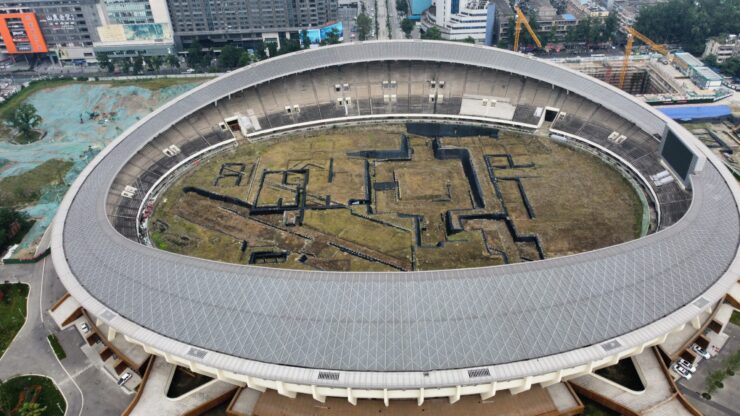Sports events and musical performances used to be held there. Group matches of the 2007 FIFA Women’s World Cup were played in the Chengdu Sports Center, a sizable stadium located in the center of Sichuan’s provincial capital in southwest China. For their Chinese admirers, international stars like Mariah Carey and Avril Lavigne played here.
Up until 2013, when a restoration and improvement uncovered artifacts from the Han Dynasty (206 BC–AD 220) all the way up to the Ming Dynasty (1368–1644) just under the center of the arena. It produced a surreal but unforgettable sight: the middle of the former field has been transformed into a grand excavation site, exposing ancient city walls, streets and canals, houses and gardens, and a palace for kings in the Ming Dynasty, as well as ceramics, coins, and iron and bronze items. The stadium’s seats and roofs are now still in tact.
According to the news of CGTN, the Donghuamen historical site finally opened to the public on Sunday after nine years of excavation. About 20 families with young children were invited by the Chengdu Culture & Tourism Development Group to see the still-under-excavation site. Scholars and archaeologists were in Chengdu stadium to present the findings.
Shan Jixiang who is the former curator of the Palace Museum said that: “The Donghuamen site has been through 21 dynasties, with relics dating back 2,000 years.” The 50,000 square meter site demonstrates Chengdu’s city site has been in the same location for more than 3,000 years, which is extremely uncommon in the globe. “It’s a unique archaeological finding and it’s a vivid manifestation of the pulse of Chengdu.” said Shan.
The ShuDao (translation: The Roads to Shu) historic mountain road system, which has connected Central and mountainous Southwest China for more than 2,300 years, has included the Donghuamen site as an essential component of its nomination to the UNESCO List of World Heritage Sites. Shan stated that: “Donghuamen has the potential to fill a blank of core cities of China on the UNESCO World Cultural Heritage List.”
At the location, work is being done on an archaeological park, the first phase of which will open to the public the following year, just in time for Chengdu’s hosting of the Universiade in 2023.
Cover Photo: CGTN
